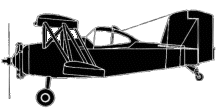
ASN Wikibase Occurrence # 290534
This information is added by users of ASN. Neither ASN nor the Flight Safety Foundation are responsible for the completeness or correctness of this information.
If you feel this information is incomplete or incorrect, you can submit corrected information.
| Date: | Wednesday 18 June 2014 |
| Time: | 19:30 LT |
| Type: |  Grumman G-164B |
| Owner/operator: | Chorman Spraying LLC |
| Registration: | N891JC |
| MSN: | 193B |
| Year of manufacture: | 1977 |
| Total airframe hrs: | 12108 hours |
| Engine model: | Pratt & Whitney R-1340-AN1 |
| Fatalities: | Fatalities: 0 / Occupants: 1 |
| Aircraft damage: | Substantial |
| Category: | Accident |
| Location: | Farmington, Delaware -
 United States of America United States of America
|
| Phase: | Initial climb |
| Nature: | Agricultural |
| Departure airport: | Farmington, DE (D74) |
| Farmington, DE (D74) | |
| Investigating agency: | NTSB |
| Confidence Rating: |
The pilot reported that the takeoff was normal for the agricultural flight and that he subsequently reduced the manifold pressure to 32 inches and the propeller speed to about 2,000 rpm. After the airplane reached about 150 ft above ground level during the climbout, he commanded a left bank, and the airplane immediately began to "settle." He rolled the airplane to a wings-level attitude; however, the airplane subsequently made an uncommanded right roll, which he described as "similar to entering a stall." He attempted to activate the product "dump" handle; however, he inadvertently activated the "spray" handle. He again attempted to activate the "dump" handle; however, due to the airplane's low altitude, he did not have time to do so, and the airplane then impacted terrain. Examination of the engine revealed that the intermediate gear had three teeth sheared off; however, this likely occurred during the accident sequence and did not contribute to the accident. No other preimpact abnormalities that would have precluded normal operation were noted.
Although the airplane was below its maximum takeoff weight, the density altitude around the time of the accident was calculated to be about 2,100 ft, which would have decreased the airplane's climb rate by about 20 percent. Therefore, it is likely that the decreased climb rate, the pilot-commanded reduction in engine power, and the loss of lift developed during the left bank led to the airplane exceeding its critical angle-of-attack and then experiencing an aerodynamic stall at too low an altitude for the pilot to affect a recovery before the airplane impacted the ground. Although it is possible that the pilot reapplied full power following the first indication of a stall, he was likely more focused on unloading the product to reduce the total weight of the airplane than on recovering from the stall.
Probable Cause: The pilot's inadequate preflight planning for a takeoff in high-density altitude conditions and his decision to reduce power during the initial climb, which led to the airplane exceeding its critical angle-of-attack and experiencing an aerodynamic stall.
Accident investigation:
 |
|
Sources:
NTSB ERA14LA321
Location
Revision history:
| Date/time | Contributor | Updates |
|---|---|---|
| 06-Oct-2022 16:18 | ASN Update Bot | Added |
Corrections or additions? ... Edit this accident description
The Aviation Safety Network is an exclusive service provided by:


 ©2024 Flight Safety Foundation
©2024 Flight Safety Foundation